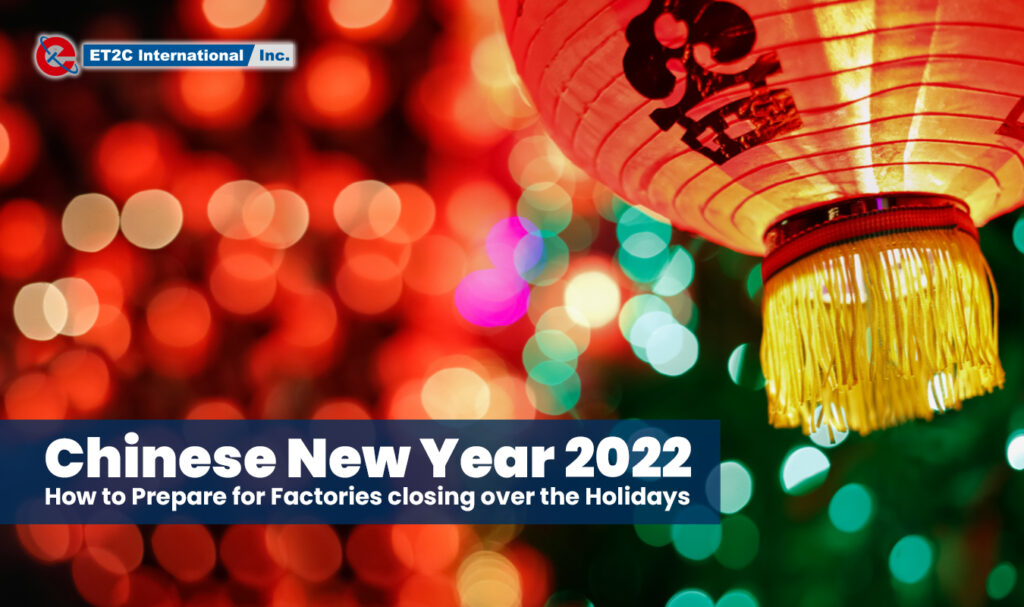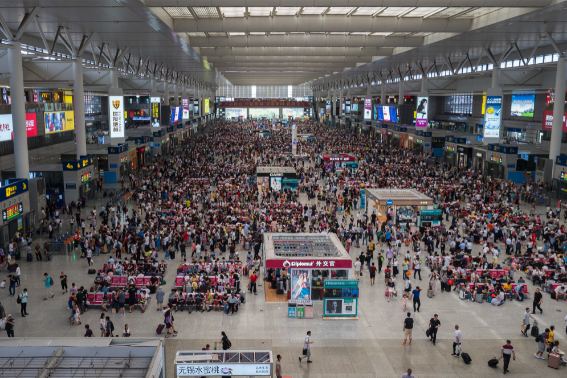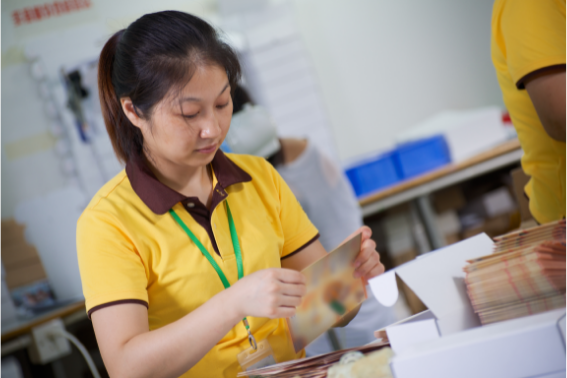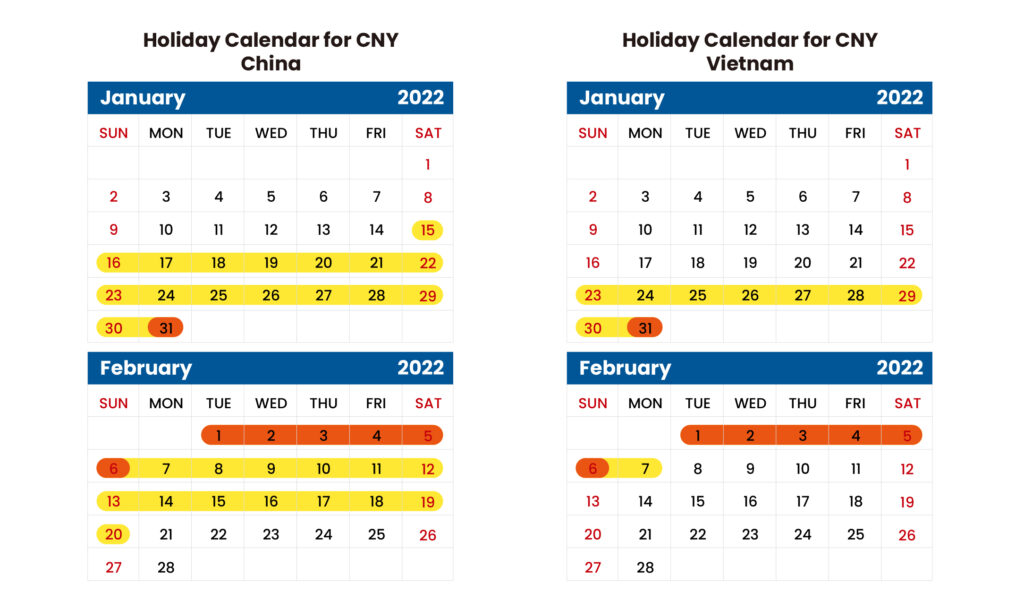
Chinese New Year is an annual event that has a permanent place in any Buyer’s diary. It is a holiday that sharpens focus for Buyers, who must plan around it to avoid delays and stock shortages.
Chinese New Year, also known as the Spring Festival, is the most important holiday in the Chinese Calendar. The festival celebrates the start of the Lunar Calendar, its date is not a fixed day but changes every year. For about 15 days, families come together to celebrate and spend time together from all over the country.
Chinese New Year for the Manufacturing Sector
A large proportion of factory workers are in fact migrant labourers. The number is not quite what it used to be when Guangzhou was the manufacturing hub of China. By the way, it is still significant with a large section of the 700 million people travelling back home over Chinese New Year involved in manufacturing.
While the official public holiday only lasts for seven days, the majority of factories are closed for extended periods, between two and four weeks, which is referred to as Chūnyùn (春运). This is, in fact, the largest human migration in the world.

Chinese New Year for Buyers & importers
With factories closed and most of the country off work, the wheels of China’s manufacturing behemoth grind to a halt. Even after the holiday, it takes a few more weeks to get back up to full production capacity and output.
All elements of the Chinese supply chain take a while to get back online. From general employee churn (some do not return), extended holidays to getting sub-suppliers to full production capacity it can take in excess of one month for factories to be in full production mode (and who would not predict some additional disruption given the past 18 months!).
So, what should companies buying from China (keep in mind other Asian countries also celebrate the Lunar New Year, like Vietnam and Tet) do in the run-up to Chinese New Year to manage their suppliers and lead times?
Chinese New Year – Tips for Buyers
Considering lengthy factory closures, keep the following in mind as we end the Calendar Year:
1. Staff Turnover
This period of the year is considered the best time to switch jobs in China. Often, workers will move to other factories, which compounds the issue of getting the factory up and running after CNY. As a result, many factories will not be back to full production levels for over a month after the holiday.

2. ‘Quality’ Around CNY
Before the holiday, factories rush to get orders out the door. The pressure is intense to meet deadlines and prevent delayed stock from sitting idle (does not help anyone get paid). Inevitably, under such conditions, the risk of quality defects will increase as factory managers have to find a range of creative ways to meet the ex-factory dates.
Similarly, after the holiday, there may be less experienced employees in the factory. This is because HR managers need to recruit new staff for those that did not return. Again, the risk of quality defects may rise, although with the right supplier and quality program in place, this can be avoided. For example, making sure more frequent product inspections are implemented around before and after the holiday will provide greater visibility and reassurance around product quality.
3. Shipping Costs
Freight rates have had a remarkable run in 2021, much to the detriment of importers and retailers, although they have softened into Q4. Chinese New Year always presents a ‘cliff-edge’ for companies looking to ship prior to the holiday and you can therefore anticipate a spike in rates.
4. Payments
Every year, Chinese factories push for payments early to pay their staff bonuses and collect as much cash prior to the holiday. Just be careful, particularly when paying deposits or advances for stock not yet shipped. This is the time of year in which most Chinese factories close down permanently.
5. Chinese New Year 2022
February 1st, 2022 is the first day of the “Year of the Tiger.” The official government holiday lasts from January 31st through February 6th. However, some factories will close earlier in January. So check now with your factory contacts to get their exact closure dates.
A New Year’s Bounce
No Buyer wants to have no stock. So how should companies approach Chinese New Year when it comes to manufacturing in China?
Clearly, planning is central to the solution. For any shipments targeted to land in April and May, you would typically start cutting purchase orders this month. However, due to all the Covid-related supply chain bottlenecks in 2021, many experienced buyers have already placed their orders this time around. Communication is a central part of being able to plan. Make sure you are aware of when your suppliers and their suppliers are shutting down this coming Chinese New Year.
Also, often the period immediately post Chinese New Year for factories can be slow both as factories ramp up capacity, but also a result of customers already being stocked up. If it works for your purchasing cycles, using this downtime to produce your products can present benefits (price and capacity available for you) as offseason orders.
Lastly, remember that the sourcing landscape extends beyond China. Although the Lunar New Year is celebrated in other Asian countries where you may have manufacturing partners (Vietnam, South Korea, Indonesia etc), the holidays generally tend to be less imposing. Also, look for Near Shore alternatives, like Turkey for Europe.

Summary
Make sure you communicate with your partners across Asia when it comes to the Lunar new year, particularly in China. If you need support in this area or just some help on the ground, we are here to help. Contact us at contact@et2c.com.

